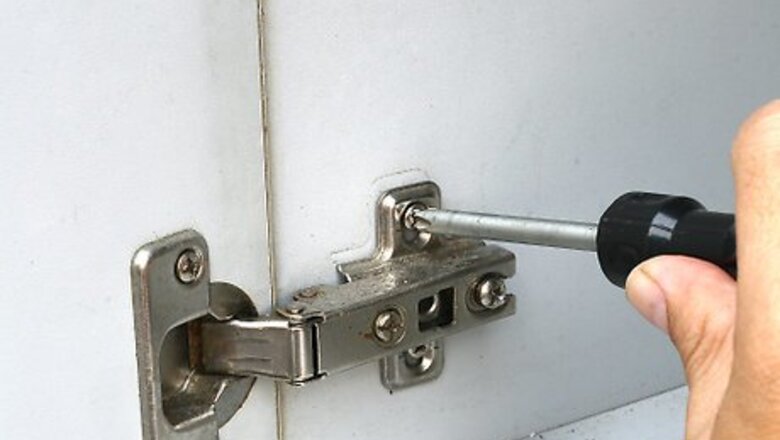
views
- Unscrew the old hinges from the cabinet frame and remove the door. Place the door on a flat surface and remove the hardware.
- Screw the same type of hinge into the door. Have a partner hold the door up to the cabinet frame and use a screwdriver to screw the hinge into the old holes.
- If the new hinge doesn’t line up with the old holes, use a combination square to align the hinge. Mark the screw holes, drill pilot holes, and screw in the hinge.
Removing the Old Hinges
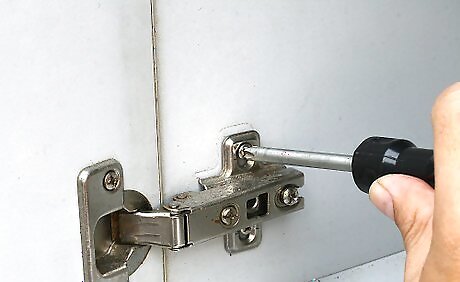
Unscrew the old hinges from the cabinet frame and remove the door. While removing the screws, DIY home improvement specialist Mike Katona advises, “support the cabinet door to ensure it does not fall and get damaged.” While supporting the cabinet door, use a drill fitted with a screwdriver bit to unscrew the bottom hinge, and then the top hinge. Some hinges have release levers that allow you to remove the door without using tools. Starting with the bottom hinge, press the lever to separate the door from the cabinet frame.
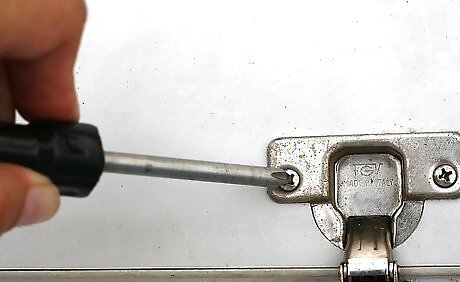
Unscrew and remove each hinge from the cabinet door. Next, DIY home improvement specialist Mike Katona says to “take your cabinet door, place it on a flat surface, and remove the screws attaching the hardware to the door.” You can remove the screws using a screwdriver or a drill fitted with a screwdriver bit. If your hinges are painted over, use a razor blade to gently score around the outside of the hinge so you can remove it without damaging the paint on the door or frame. While you have the doors off, remove any knobs or handles you’d like to replace at the same time. You can also clean the cabinet door, repaint it, or re-glue any loose laminate.
Replacing the Old Hinges with the Same Type of Hinge
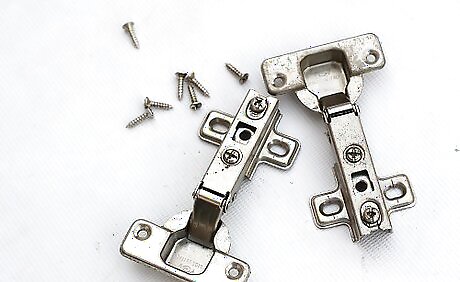
Purchase new hinges, using your old hinge as a comparison. DIY home improvement specialist Mike Katona says that if you’re updating the hinges on an old cabinet, “it’s typically best to find a hinge that is mounted the same way and has mounting holes and screws in the same places. This will allow you to update your hardware without having to drill new holes, patch old holes, and repaint.” If possible, identify the brand of the old hinge and try to replace the hardware with that same brand. To make sure the new hinge matches the old one exactly, lay both side-by-side to see if the screw holes are the same distance apart. If you’re buying hinges online or you’d like to be sure they match, measure the dimensions of the old hinge and find a new hinge with the same length, height, and thickness.
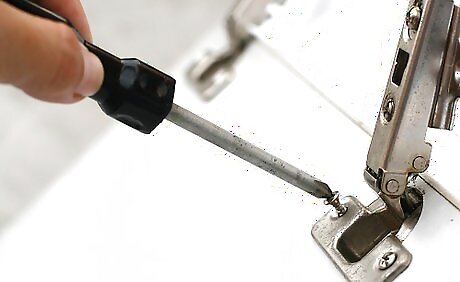
Screw the new hinges into the old holes in the door using a screwdriver. If the new screw holes don’t line up completely, use a combination square to line up the hinge squarely with the bottom and side of the door. Mark where the holes are, then use a drill bit that’s slightly smaller than your screw to drill pilot holes. Use a screwdriver to screw in the hinge. If the holes for the old hinges are stripped, DIY home improvement specialist Mike Katona recommends to “insert a toothpick into the hole prior to screwing in” the hinge.
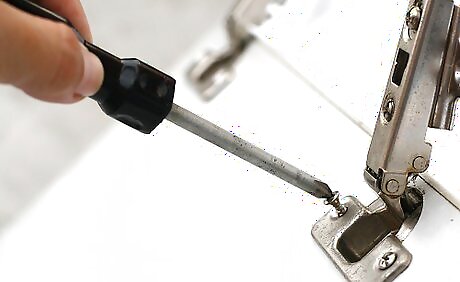
Position the door against the frame and screw the hinges into the old holes. Ask an assistant to hold the door up against the frame. Set the new hinges over the holes for the old hinges in the cabinet frame and screw them in. This method can also work if you’re upgrading the same kind of hinge to a soft-close version.
Replacing the Old Hinges with a Different Type of Hinge
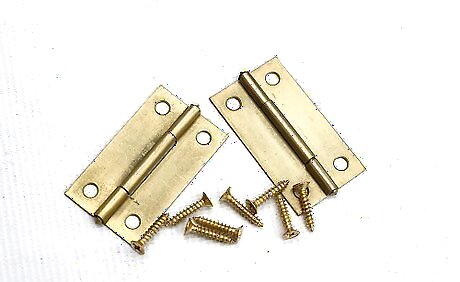
Choose new hinges that work with the type of cabinets you have. Face frame cabinets have a lip around the opening of the cabinet, while frameless cabinets do not. Concealed and inset-mount hinges require drilling a hole into the door to mount them, while semi-concealed and exposed hinges just screw into the frame and door. Concealed hinges: These are installed on frameless cabinets on the inside of the door and cabinet frame, and no part of the hinge can be seen when the door is closed. Inset-mount hinges: Inset (or overlay) mount hinges are recessed into the door, allowing it to lay flush against the face of the cabinet. Semi-concealed hinges: These hinges can only be seen at the door joint. These are usually found on face-frame cabinets and their sizes might vary based on the size of the cabinet. Exposed or traditional hinges: These hinges can be fully seen and are installed on the outside of inset or overlay cabinets. Overlay doors sit on top of the opening and cover up the face frame or cabinet edges. Inset doors are mounted inside the face frame opening with a small gap around them. To measure the cabinet’s overlay, put a piece of tape along the edge of the closed doors. Open the door and measure the distance between the cabinet opening and the tape.
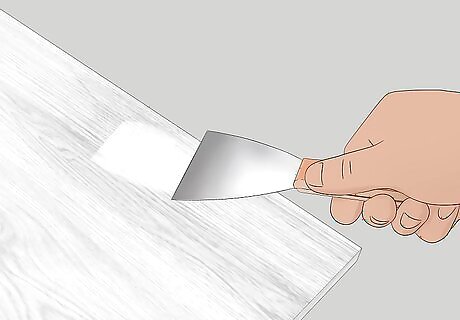
Fill the old screw holes in the door and frame with wood putty. Once the putty dries, paint the door and frame if necessary. Allow both surfaces to dry completely before installing the new hinges.
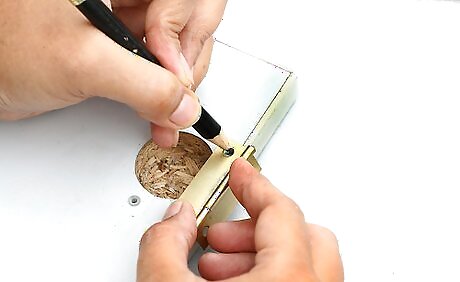
Align the new hinges on the door using the manufacturer’s instructions. Measure the distance between the top of the door and the hinge, then mark the top of the hinge with a pencil. Measure the distance between the side of the door and the hinge and make a mark at the edge of the hinge. Position the hinge within both lines. Concealed or inset hinges: Follow the hinge’s instructions to mark where the hole should be on the cabinet door. Use a hole saw with the same-sized bit to cut out the hole. Drill into the cabinet door with the hole saw until the hinge fits flush into the door. Exposed or traditional hinges: Depending on the brand, you may have to use a chisel to cut a recess inside the two lines you marked in this step for the hinge to fit.
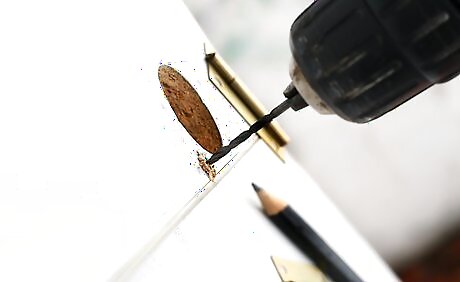
Drill pilot holes into the cabinet door and screw in the hinges. Check to make sure the hinge is aligned with the side and top of the cabinet door with a combination square. Mark each hole with a pencil, then remove the hinge and drill pilot holes. Use a screwdriver to attach the new hinges to the cabinet door. Concealed or inset hinges: With the hinge inside the circular hole you cut out, mark the screw holes. Remove the hinge, then drill pilot holes, replace the hinge, and screw it in. Place a piece of painter’s tape on your drill at the length of the new screw so you can drill an appropriately-sized hole. Before drilling a pilot hole, consider creating an “X” with painter’s tape over the location for your screw to reinforce the wood and protect against cracking.
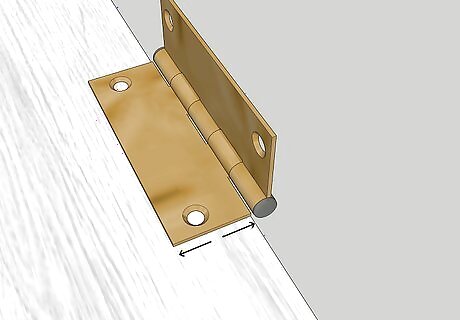
Measure how far the hinge should be from the edge of the frame. Consult your hinge’s instructions to see how far the edge of the hinge should be from the edge of the cabinet frame. Use a pencil and a straightedge to draw a line down the frame, where the edge of the hinge should line up with the edge of the cabinet. You can find how far the cabinet hinge should be from the edge of the frame in the manufacturer’s instructions.
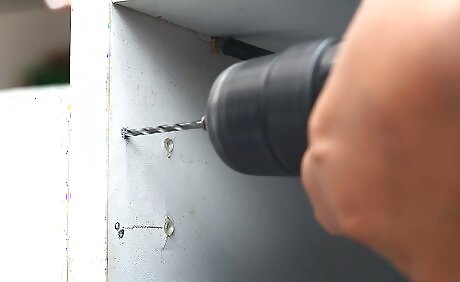
Hold the door up to the frame, mark the hinge holes, and drill pilot holes. Have a partner align the cabinet door against the frame so that the door evenly covers the hole. Use a level or combination square to make sure the door is perfectly level and square with the frame. Mark each hole in the the hinge with a pencil, then put the door down and drill pilot holes. Concealed or inset hinges: Some brands allow you to detach each side so you can screw in one side on the cabinet frame and the other on the door. Once both sides are installed, just click the hinges into place. Some also allow you to adjust the length and width of the hinge by tightening or loosening the screws on top of the hinge until the door aligns with the cabinet frame.
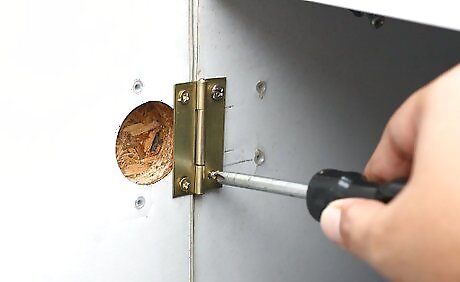
Hold the door up again to screw the hinges into the door frame. Align the hinges in the door with the holes you drilled in the frame. Screw the hinges into the frame half-way to make sure they line up correctly. If they don’t, remove the doors and correct your measurements. When the door and frame line up, tighten the screws. Open and close the door to make sure that the new hinges are positioned correctly on both doors.




















Comments
0 comment